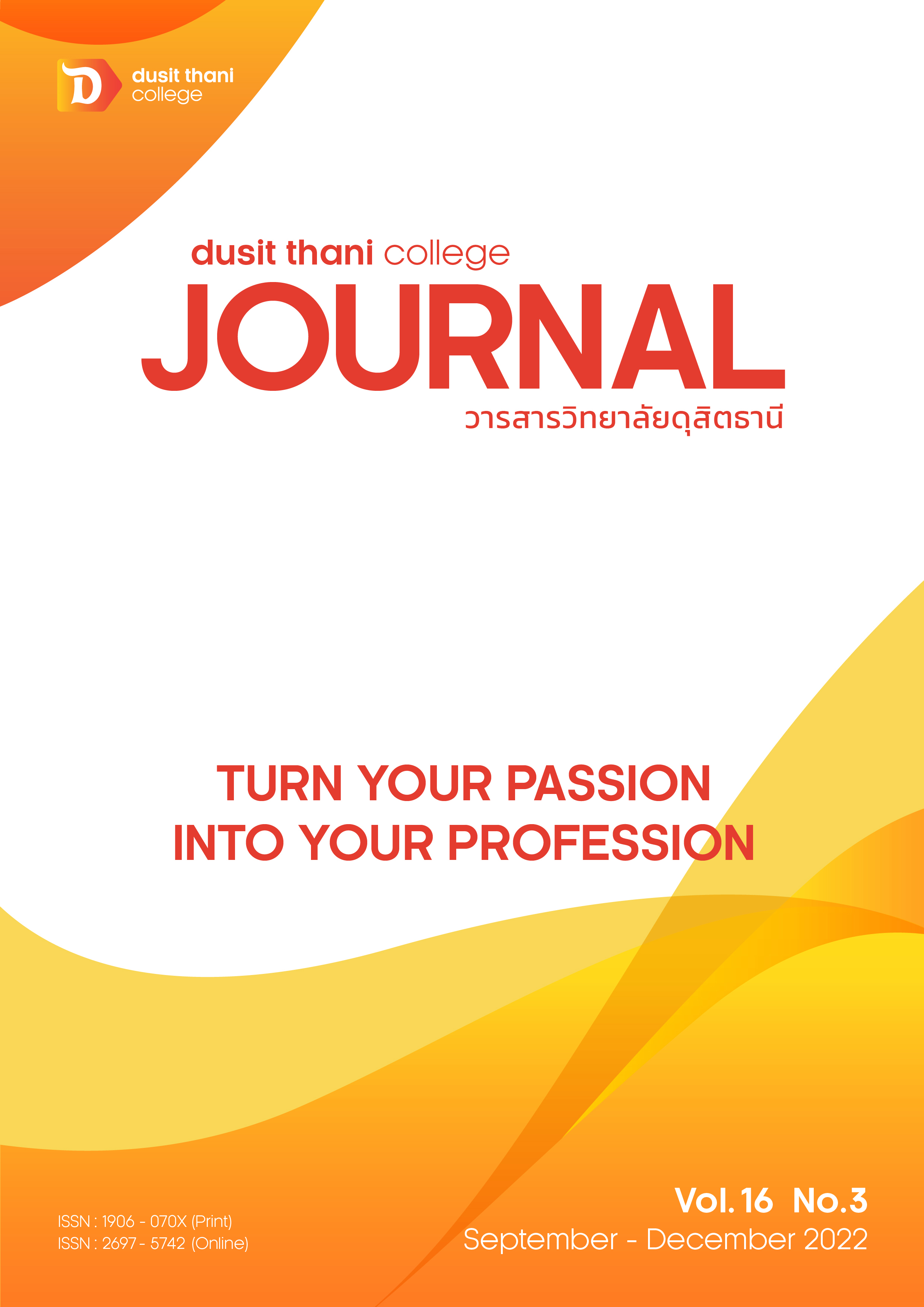Acceptance of the Sensory Process for the Development of a Salad Dressing Product combined with Yanang Leaves Juice and Its Preservation at Room Temperature
Main Article Content
Abstract
The objective of this research was to develop a clear salad dressing mixed with the Yanang leaves juice. Three standard formulas for clear salad dressing recipes were formulated and the sensory test was performed in order to select for the best acceptance. The Yanang leaves juice was added to the selected formula of clear salad dressing for the ratio of 15, 20, and 25%. Sensory tests were performed to determine product acceptance. The microbiological quality of the salad dressing mixed with Yanang leaves juice was assessed for the shelf-life indicator. The results showed that the standard formula of salad dressing code 937 (25%) was the most accepted. The average acceptance scores were 6. 60, 6.40, 6. 86, 6. 36, and 7.02 for color, aroma, taste, texture, and overall liking, respectively. The ratio of Yanang leaves juice to clear salad dressing with the highest acceptance score was 25% with the sensory score of 7.28, 7.26, 7.44, 7.04, and 7.76 for color, aroma, taste, texture, and overall liking, respectively. The microbiology test was found to be within the safety range of the standard.
Article Details

This work is licensed under a Creative Commons Attribution-NonCommercial-NoDerivatives 4.0 International License.
Article Screening Policy
- All research and academic articles to be published must be considered and screened by three peer reviews in the relevant field / article.
- All articles, texts, illustrations and tables published in the journal are the personal opinions of the authors. Editors don't always have to agree. And no responsibility whatsoever is the sole responsibility of the author.
- The articles to be published must never be published. Where did you first publish? And not in the consideration of other journals If the audit found that there has been a duplicate publication It is the sole responsibility of the author.
- Any article that the reader sees as being plagiarized or impersonated without reference. Or mislead the work of the author Please let the journal editor know it will be your greatest blessing.
References
Angkana Supakitvanichchoke. (2016). Dressing Sauce Dip. Bangkok: Amarin Cuisine Amarin Printing and Publishing, pp. 31-32. (in Thai)
Ashurst Philip R. (1999). Food Flavorings. An ASPEN Publication. USA. pp.460.
Bacteriological Analytical Manual. (2002). U.S. Food and Drug Adminstration. Center for Food Safety and Applied Nutrition.
Kraipop Sarakul. (2009). Magical herbs Bai Yanang. Bangkok: Thinkgood, pp. 12-18. (in Thai)
Narong Niyomvit and Anchanee Utaipatanacheep. (1985). Culinary Science. Kasetsart University. Bangkok. (in Thai)
Orapin Kontiang. (2011) Production of reduced-calorie concentrated salad dressings for herbal supplements. Thesis, Faculty of Science and Technology, Chiang Mai University, p. 25. (in Thai)
Panot Tangsucharit, Veerapol Kukongviriyapan, Upa Kukongviriyapan, Wanchai Airarat. (2006). Screening for Analgesic and Anti-inflammatory Activities of Extracts from Local Vegetables in Northeast Thailand. Srinagarind Medical Journal, 21(4), 305-310.
Romgase Sakamula and Wachiryah Thong-asa. (2017). Effect of Tiliacora triandra leaf extract on glycemic control in chronic high glucose intake mice. Proceeding: The 14th KU KPS Conference (p.2738-2746). Bangkok: Kasetsart University. (in Thai)
Samrueng Meesub. (2007). Yanang Miracle Herb. Bangkok: Theera Printing and Publishing, pp. 4-5. (in Thai)
Sirilak R., Yaowapa K. and Buppha K. (2007). Fresh Power Food. Bangkok: Sunlight Publishing Company Limited, pp.77-78. (in Thai)
Sok Hep. (2011). FACTOR IN DECIDING TO PURCHASE HEALTH FOODS IN NONTHABURI PROVINCE. Independent Study, Siam Univesity. (in Thai)
Thai Industrial Standards Institute. (2004, December 19). Dressing (672/2547). Retrieved from https://tcps.tisi.go.th/pub/tcps672_47.pdf. (in Thai)
Yaowapa K., Nawara P. (2008). Salad dressings and sauces. Bangkok: Sunlight Publishing Company Limited, pp.11-15. (in Thai)


